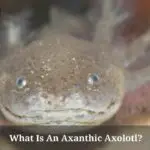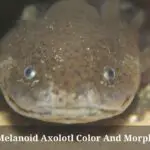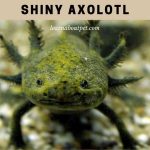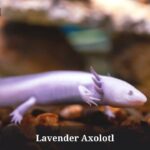Axolotls have many colors and morphs. There are three natural color pigment cells derived from genetics which are iridophores, xanthophores, and melanophores. If you are looking for shiny and iridescent axolotls, you need to look for axolotl iridophore cells. Still unfamiliar with it? Let’s get to know.
What is an iridophore Axolotl? Many axolotl enthusiasts still find it difficult to distinguish between melanophores and iridophores. Melanophores make dark pigment melanin and have a more uniform color, sometimes only a few or no spots. Axolotls that have iridophores cells will look shiny or iridescent.
The iridophores can influence the melanophores, forming banded and spotted patterns like wild-type axolotls.
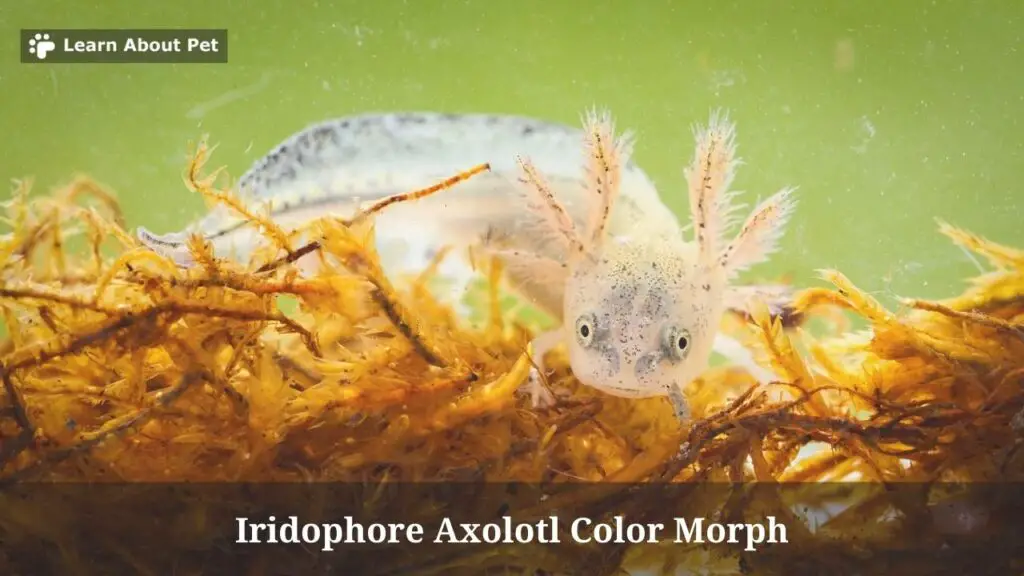
Let’s get deep information on how color pigments affect the axolotl’s color and focus on axolotls with iridophore cells. Let’s read this article to the end.
What Is An Iridophore Axolotl?
Iridophore axolotl has shimmer and shiny white pigments. You can start to see iridophores on the axolotl until it enters the larval stage before being frequently encountered with other pigment cells. Axolotls with iridophore cells are Golden albino, White albino, Wild-type, and Enigma.
Iridophore cells can reflect light and add features such as a shiny and reflective layer in the axolotl’s eyes. The shiny layer has several functions. First, to prevent light from entering the eye and blurring vision in bright light. Second, improving vision in dim light by reflecting light that comes to the pupil towards the back layer of light-receptor cells.
It indicates that melanoid animals have poorer vision than axolotls with iridophore cells. In addition, there is no significant difference between the health effects or how the axolotl hunts foods using a movement detector and their sense of smell.
How To Understand That Axolotl Has Iridophore Cells?
We must learn about genes and cells to understand the axolotl’s different colors. The chromatophores are three different kinds of pigment cells which you can see in the table below.
| Cells | Pigment | Color |
| Iridophore | Crystalized Purines | Reflective iridescence and shiny |
| Melanophore | Eumelanin | Blackish and brown |
| Xanthophore | Pteridines and Carotenoids | Yellow and red |
Axolotls can inherit two separate genes from their parents. Each gene can be obtained from three chromatophores types known as alleles. The color combination of the axolotl skin will be determined by the chromatophores.
Axolotls can have color patterns if both parents have similar alleles. For example, if you want albino, you must have two copies of the albino allele. It cannot be obtained from one normal allele and albino. It makes breeding practice easier to detect and can impact how rare specific morphs are obtained.
To find out if an axolotl has a lot of iridophore cells or not, you can see if the axolotl’s skin has gold speckles, golden eyes, or shiny skin. Enigma is one of the iridophore axolotl discovered by United States breeders, with wild-type parents having high iridophore cells.
Enigma includes a rare morph with a white belly and toes, golden eyes, and pale red gills, with a dominant color of dark gray. Most of its body is covered in shiny golden patches, indicating this morph has iridophores.
There is no further information about this morph because there is only one Enigma, and there is still no further research on the heritability of the morph.
Final Verdict – Iridophore Axolotl
Iridophore cells influence the axolotl’s color pigment, with features to reflect light that can make the axolotl incredibly shine. Proof, when axolotl has iridophore cells, are shinier or has a reflective golden color, the more iridophore in the genetic material.

An axolotl that cannot produce iridophores cells is called melanism. Melanoid axolotls have no white spots or shiny white pigments, making these morphs tend to be darker without spots. Albinism is not completely melanism, because there are examples of Golden Albino having high iridophore cells with incredible shine and reflective golden color.
As a pet lover, make sure to learn about pet more and give your pet axolotl a good and comfortable life!

Welcome to Learn About Pet. My name is Rajkumar Ravichandran and I love all pets, travel, and amazing food. I write about my passion and personal experience caring for multiple pets in this blog! ❤️
Post Disclaimer
DISCLAIMER: THIS BLOG OR WEBSITE, "Learn About Pet", DOES NOT PROVIDE YOU WITH MEDICAL ADVICE AND IS NOT A SUBSTITUTE FOR MEDICAL ADVICE. ALWAYS GET IN TOUCH WITH YOUR PERSONAL VETERINARIAN AND USE INFORMATION HERE AS GENERAL ADVICE.
The information, including but not limited to, text, graphics, images and other material contained on this website are for informational purposes only. No material on this site is intended to be a substitute for professional veterinary advice, food recommendation, diagnosis, or treatment. Always seek the advice of your veterinarian or other qualified health care provider with any questions you may have regarding a medical condition or for pet food related questions.
